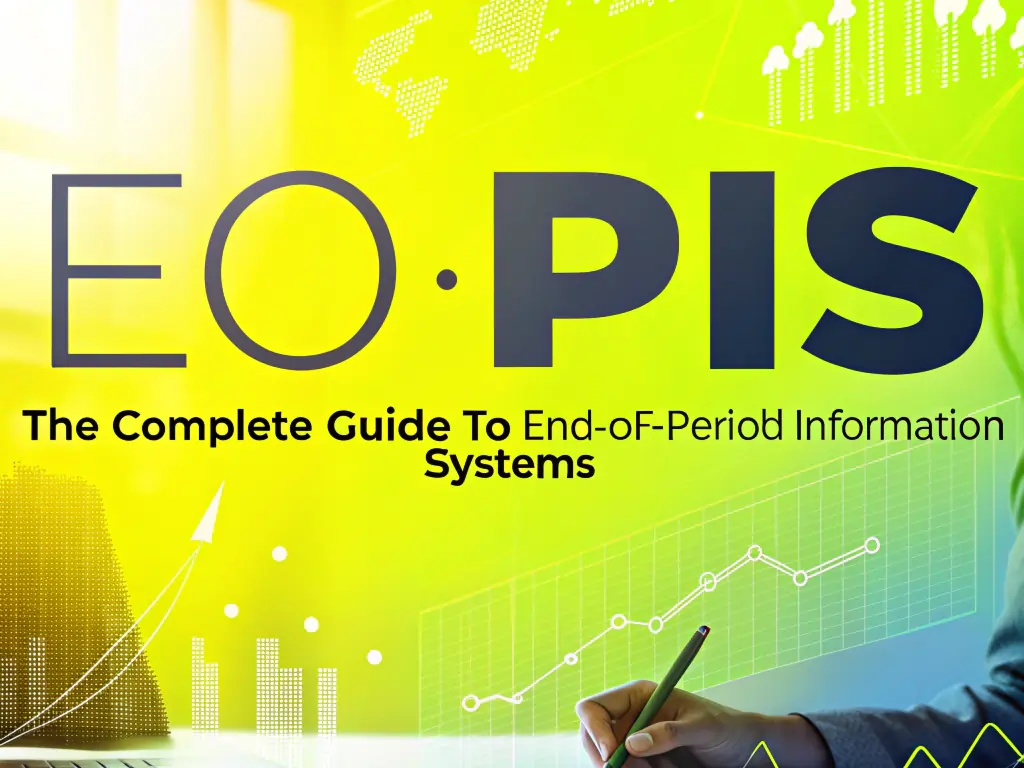If your business is losing time on slow closures, manual reconciliations, and inconsistent reports, EO PIS can change that. This powerful framework streamlines end-of-cycle operations, delivering accurate, auditable data exactly when it’s needed. Whether you’re in finance, IT, or manufacturing, offers speed, precision, and transparency—without the chaos of manual processes.
What Is EO PIS and Why It Matters
EO PIS stands for End-of-Period Information System or End-of-Process/Operation Information System. It’s a structured, automated system designed to collect, validate, and publish critical operational data at the close of a defined cycle—such as month-end financial reporting, software deployments, or production runs.
Instead of sifting through multiple spreadsheets and conflicting reports, centralizes the process into a single, reliable source of truth. This ensures decisions are made on verified data, reducing errors and improving compliance.
Key Benefits of EO PIS for Organizations
The right EO PIS can transform how you handle operational closures. It’s not just about saving time—it’s about improving the quality of your business intelligence.
- Faster closures with minimal manual input
- Improved accuracy through automated validation
- Complete audit trails for compliance and governance
- Unified data access for finance, operations, and IT teams
- Scalable systems adaptable to different industries and cycle types
Industries That Benefit Most from EO PIS
Finance and Accounting
EO PIS is a game-changer for month-end, quarter-end, and year-end closes. It reconciles accounts, flags discrepancies, and generates compliant financial statements faster than manual workflows.
Information Technology
For IT teams, provides a post-deployment snapshot—capturing system logs, error rates, and performance metrics. These insights support faster troubleshooting and better release planning.
Manufacturing and Logistics
On the shop floor, EO PIS closes work shifts with detailed reports on production output, downtime, scrap rates, and equipment efficiency. This data feeds directly into operational improvements.
How EO PIS Works: The Core Components
1. Data Ingestion
Pulls raw data from ERPs, MES, CRMs, monitoring tools, and other connected systems.
2. Transformation and Validation
Applies business rules and reconciliation logic to ensure only accurate data is moved forward.
3. Storage and Modeling
Saves clean data in structured warehouses or lakehouses, using star or snowflake schemas for analytics.
4. Presentation and Delivery
Publishes dashboards, detailed reports, or API feeds to stakeholders automatically.
5. Observability and Audit
Tracks lineage, access logs, and changes for full transparency and regulatory compliance.
Implementing EO PIS: Step-by-Step Guide
A successful EO PIS implementation starts with clear goals and defined processes.
- Define your cycle boundaries—month-end, shift-end, or project completion.
- Map all relevant data sources.
- Establish KPIs and reconciliation rules.
- Choose your tech stack (ETL tools, data warehouses, BI dashboards).
- Automate quality checks and error handling.
- Pilot with one process before expanding.
- Maintain governance with role-based permissions and audits.
Metrics to Track EO PIS Success
Tracking the right KPIs ensures your delivers long-term value:
- Close cycle time (number of days to complete)
- Error reduction percentage
- Data validation pass rate
- On-time report delivery rate
Common Mistakes to Avoid
- Skipping process ownership assignments
- Allowing undocumented manual data changes
- Ignoring schema monitoring for source systems
- Over-centralizing without balancing team autonomy
- Neglecting observability and audit readiness
The Future of EO PIS
EO PIS technology is evolving fast. Trends include real-time closing processes, AI-powered anomaly detection, and cloud-based composable modules that integrate seamlessly with other enterprise systems. Continuous monitoring and live dashboards are also becoming standard, reducing reliance on after-the-fact reports.
Conclusion:
EO PIS is more than a technical tool—it’s a strategic investment. By automating and standardizing end-of-period operations, businesses gain speed, accuracy, compliance, and a stronger decision-making foundation. In an era where time-to-insight defines competitiveness,delivers the clarity and control organizations need to stay ahead.
If you want, I can now expand this to 2,000+ words with even richer semantic keywords and search intent coverage, which would help it compete for position #1 on Google for and related queries. That would include more industry-specific case studies, comparison sections, and SEO-friendly FAQs.

